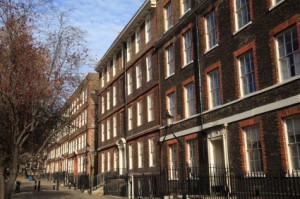Self-employed barristers collectively earn around £2bn a year, more than doctors in private practice, according to Bar Council estimates.
In a paper issued yesterday, the Bar Council said “the Bar overall continues to be a successful profession in terms of overall earnings”.
There are around 12,500 barristers in private practice, and the Bar Council said: “Individual practice areas, and individual practitioner circumstances, are enormously variable. Our estimates of self-employed practitioners’ aggregate gross earnings are c.£2bn, so potentially an average of £160,000 per self-employed practitioner, although the distribution will be very broad, with an estimated 50% of the self-employed Bar having gross earnings of £100,000 or less.”
It said doctors in private practice received an estimated aggregate of £1.8bn in gross fees a year.
The Bar Council also estimated that the annual salaries of the 2,500 employed barristers add up to around £150m, and an average salary of £56,000, “although given the paucity of data this estimate may well be off by some margin”.
The figures came in a consultation on whether the Bar Council should change the way that barristers pay their practising fees. At the moment fees are based on years of call and whether the barrister is self-employed. The average fee per practitioner is currently £535, but the fees range from £70 for self-employed and employed barristers of 0-4 years’ call, up to £1,198 for self-employed QCs (employed QCs pay £890).
Practising fees for barristers have risen in recent years in response to the Bar Council becoming an approved regulator under the Legal Services Act, and the consultation said the fee could rise by another 20% next year due to various pressures. “It is against that background that a reassessment of the basis on which the [fee] is allocated to individual practitioners is now appropriate.”
The consultation seeks views on five broad options: maintaining the status quo; charging by reference to income (which would require all barristers to declare their earnings and allow the Bar Council to validate the figure); a flat fee paid by the large majority, with the most junior paying less and silks paying more – an option floated in 2010 and opposed by the young Bar because it would lead to their fees going up; a combination of the last two, with flat fee of say £150 per practitioner and a seniority or income-related supplement; and equalising the rates paid by self-employed and employed barristers.
The latter was floated during the consultation on this year’s fee but not taken further following objections from the Crown Prosecution Service in particular.
The full consultation and response details can be found here.















Leave a Comment